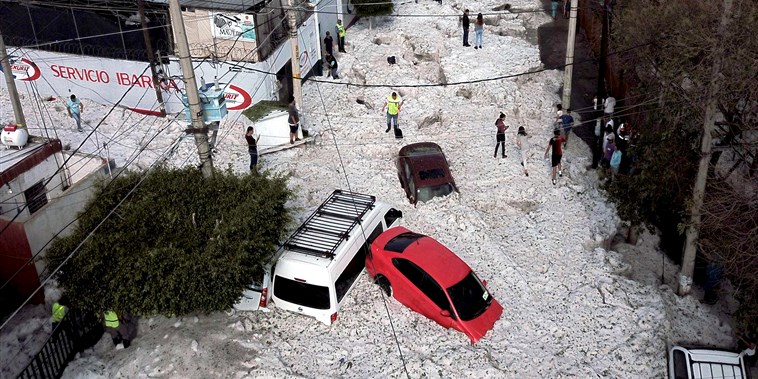Here’s what scientists say
The storm dumped 3 feet of hail on Guadalajara and left locals and people around the world searching for an explanation.
Why Mexico was pelted with hail on the last day of June
The freak storm that dumped more than 3 feet of hail on Guadalajara, Mexico, on Sunday left locals and people around the world wondering how such an extraordinary event could hit an area that just days before had been basking in warm, sunny summer weather.
Some immediately pointed the finger at climate change. “Hail more than a meter high, and then we wonder if climate change exists,” tweeted Enrique Alfaro Ramírez, governor of Jalisco, the state in southwestern Mexico where Guadalajara is.
But scientists aren’t so sure of the link.
“One good picture often leads people to go, ‘This is unprecedented,’” said John Allen, a meteorologist at Central Michigan University in Mount Pleasant. “It looks impressive, but we’ve seen similar events in other parts of the world fairly recently. … I really don’t think we have a way to say conclusively that an event like this is attributable to climate change.”
Allen said hailstorms aren’t unheard of in places like Guadalajara, whose 5,100-foot elevation and location in a mountainous region make it particularly vulnerable to the sort of slow-moving thunderstorm that unleashed all that hail on the city’s 1.5 million residents.
Hailstorms are more common in summer than at other times of year, since the atmosphere then tends to be wet and unstable enough for hail to form, said Julian Brimelow, a scientist with Canada’s Department of the Environment and Climate Change in Edmonton.
Brimelow agreed that it was hard to conclusively pin the Guadalajara hailstorm on climate change. But he said some recent research, including his own, suggests that warmer temperatures could affect the size of hailstones, with large stones becoming more common.

COMMENTS